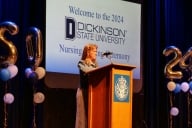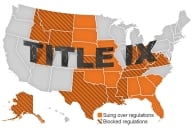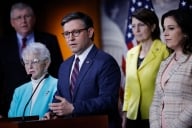You have /5 articles left.
Sign up for a free account or log in.
WASHINGTON -- With only a few days remaining to reach a legislative deal before the interest rate on new, federally subsidized student loans doubles July 1, the Senate appears to be inching closer to a bipartisan compromise.
But given deep divisions between Senate Democrats and House Republicans in particular on what to do about student loans, there is still no guarantee that Congress will manage to avert the rate hike in time.
The interest rate increase -- rates for federally subsidized Stafford loans, which go to undergraduate students with financial needs, will climb to 6.8 percent from 3.4 percent on July 1 without legislative action -- has been foreseen for a year, ever since Congress passed a short-term bill last year to avert a scheduled rate hike. And a few months ago, a compromise seemed likely: both President Obama and Congressional Republicans called for a shift from a student loan interest rate picked by Congress to a market-based rate that would reflect interest rates in the economy at large.
Congressional Democrats, though, preferred to extend the current interest rate for two more years, allowing lawmakers to tackle the issue when they reauthorize the Higher Education Act. And when President Obama threatened to veto a House-passed bill to shift to market-based interest rates, Washington seemed to have reached a stalemate.
At least in the Senate -- where an initial Republican proposal closely paralleled Obama’s -- that stalemate appears to be easing. A bipartisan group of senators is circulating a proposal for market-based interest rates that splits the difference between the administration’s plan and an earlier proposal from Senate Republicans.
That proposal comes from Senators Joe Manchin, a West Virginia Democrat; Tom Coburn, an Oklahoma Republican; Richard Burr, a North Carolina Republican; and Angus King, a Maine independent who caucuses with the Democrats. The measure would base interest rates on the 10-year Treasury note: undergraduate Stafford loans would have an interest rate of the 10-year Treasury rate plus 1.9 percentage points. Based on Tuesday's 10-year Treasury note, that would lead to undergraduate loans with an interest rate of about 4.5 percent. Graduate and parent PLUS loans would have higher rates. Rates would vary from year to year for new loans, but remain fixed over the life of the loan.
The House Republican plan is based on similar principles, but would reset the interest rate each year for existing loans based on market conditions -- a truly variable rate. (Students could lock in an interest rate by consolidating their loans after graduation.)
Senator Tom Harkin, the Iowa Democrat who chairs the Senate Committee on Health, Education, Labor and Pensions, was said to be a major hurdle: Harkin, like other Congressional Democrats, preferred to extend the 3.4 percent rate for another two years. But Harkin is now circulating a market-based proposal of his own.
Harkin’s plan would include an interest rate cap -- said to be a deal-breaker for Senate Republicans. Still, the bipartisan compromise put forward by Manchin, Coburn, Burr and King was said to be gaining momentum in the Senate by Tuesday afternoon.
The question is whether House Republicans would support the bill, which is intended to save the government money (or at least not increase the deficit) in the next 10 years, but will carry costs in the first five years because it lowers interest rates compared to current law.
House Republicans have so far been unwilling to support legislation that increases the deficit within the five-year window -- the reason their interest rate bill included a variable rate for student loans that resets each year.
If a Senate compromise can’t get enough support to pass the House before the July 1 deadline, Congress could also reach a retroactive compromise that affects loans the Education Department has already made.








